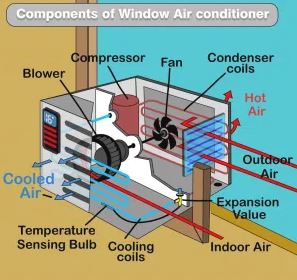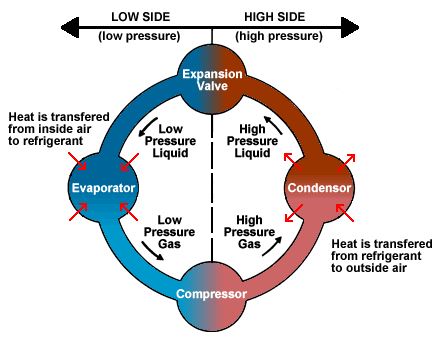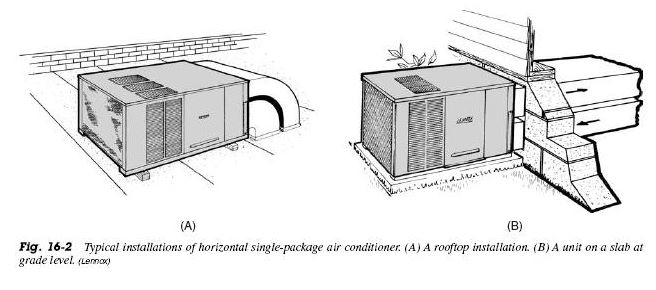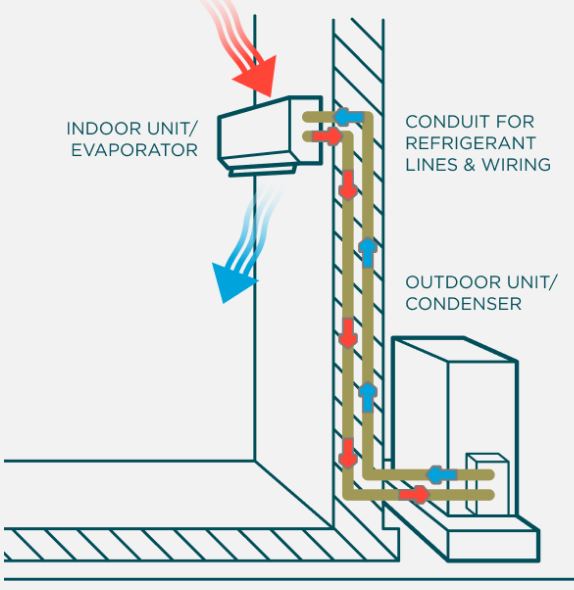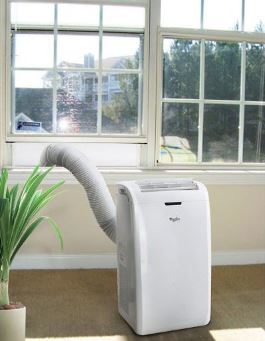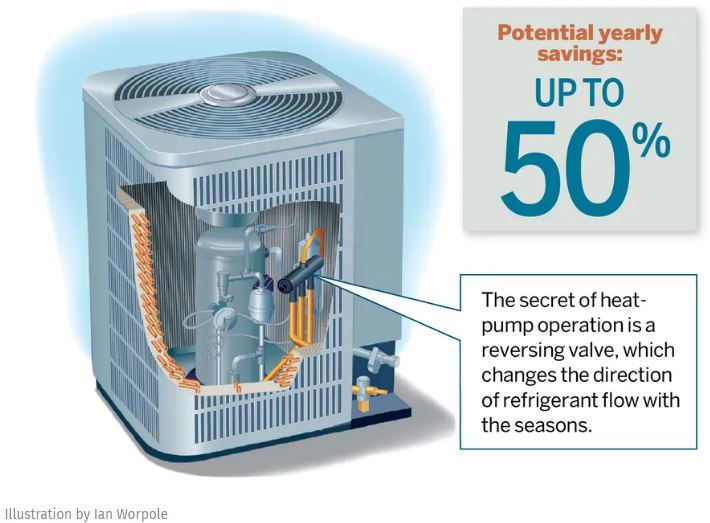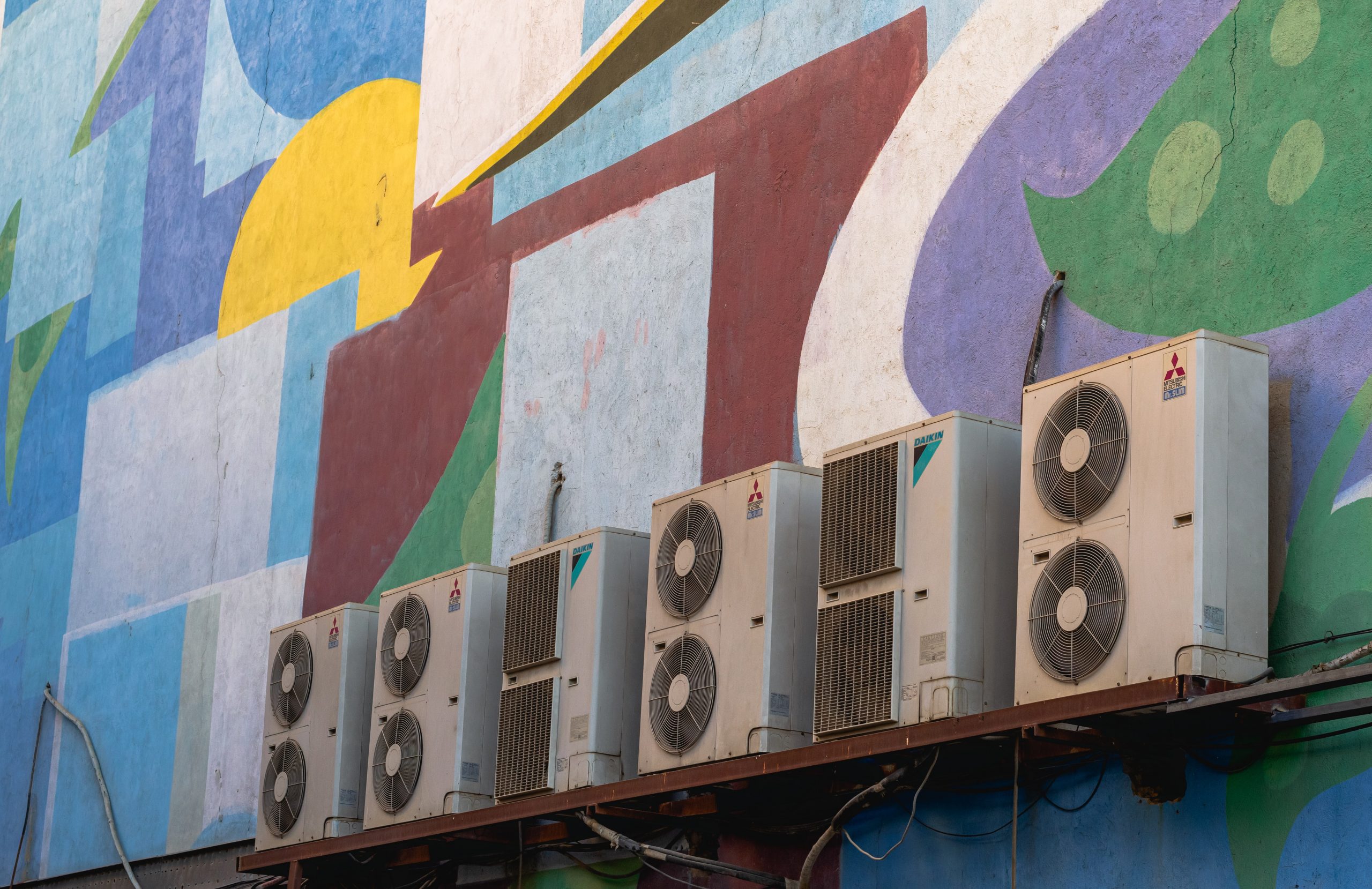What kind of air conditioner do you have?
What kind of air conditioner do you have?
An air conditioning system is certainly not the most interesting equipment that you choose for your home, or that comes with an existing home you buy. It either works well, or it doesn’t, right? Unfortunately it’s the ones that don’t work well that get noticed! Depending on the size of home, configuration and budget, there are about 7 different types that may be used. Here’s how to tell what kind of unit you have, and what kind you may want to upgrade to in the future!
Before talking about all the different types, however, let’s go over the basic parts of an air conditioner by looking at one of the most compact and common versions, a window air conditioner.
(diagram source: studentlesson.com)
The components of a window air conditioner can be found in most other systems. To start, note that the outside air and the inside air don’t mix. Indoor air stays inside and outdoor air stays outside; it’s the refrigerant in the coils that goes back and forth, transferring heat from indoor air to the outside air. Let’s start with warm indoor air. In this diagram, it’s sucked into the unit from the right (“Indoor Air” red line), via a squirrel-cage blower (circular cage), and blown over the cooling coils (blue line going back and forth), making the air cool. The air is blown out the front of the unit and voila! The room becomes cooler. What happened to the heat from the air? Here it’s useful to show another diagram, which is of the refrigerant system only.
(diagram source: swtc.edu)
Once you understand this inside/outside, low-pressure/high-pressure system, you will be able to understand most of the common refrigeration systems! The heat of the inside air was absorbed by the refrigerant in the cooling coils (see left side of diagram). The cooling coils are also called the evaporator, because inside the cooling coils, the refrigerant changes from a liquid to a gas (evaporates) with the addition of the heat of the inside air. Once the refrigerant passes all the way through the evaporator, it is drawn outside by the compressor, which changes it from a warm gas to an even hotter gas. The hot gas will then pass through the condenser, which is another set of coils over which a fan blows outside air. When heat is drawn from the gas, it turns into a liquid again (upper right side of the diagram). Before passing to the evaporator again, it must flow through the expansion valve, which is a very important part of the air conditioner. The expansion valve gets a signal from the temperature sensing bulb (first diagram), and only lets a small portion of the hot pressurized gas into the evaporator as needed, creating a low pressure area on the cooling side. Then we have completed the cooling cycle, and the refrigerant makes another loop while the fans serve to transfer heat to the air on each side of the window.
Central Air Conditioning uses all of these basic components, serves multiple rooms in a home, and can be categorized into two types: Split and Package. The main difference between these two is the location of the evaporator. In addition, central air conditioning can be used for heating if it uses a heat pump. (see the section at the end to learn a little more about heat pumps).
Package units are very much like window air conditioners because the compressor, condenser and evaporator are all in one outside unit (B below). Sometimes you can recognize a package unit if there is a large metal duct running from the unit into the home (sometimes, like in the diagram, the duct is hidden behind the unit). Commercial rooftop units (A below) are often package units. The advantage of these is that all of the noise and heat of the air handler is outside and the unit comes ready to be attached to the ductwork.
(source diagram: refrigeratordiagrams.com)
Split units have the compressor and condenser located outside (unlabeled unit to the left below), while the evaporator/air handler is located inside. Normally the evaporator/air handler is located in a closet, garage, attic or crawl space. From this point the cooled air is distributed throughout the home via supply ductwork.
Source diagram: thisoldhouse.com
Mini-Split systems are a takeoff of “central split systems” in that the evaporator is located inside, but air distribution ducts are eliminated. For this reason, mini-splits are also called ductless systems, and because air ducts can be a source of energy loss, they are more efficient. They used to supply refrigerant to only 1 evaporator (1 room), but modern units (Carrier for example) can supply refrigerant to up to 9 rooms. (thisoldhouse.com) Instead of circulating cooled air through ducts, the refrigerant is sent into the home to small concealed or wall-, ceiling- or floor-mounted evaporator/fan systems. It is a good solution for remodels and additions: instead of adding more ductwork or replacing a huge central unit that may be too small to serve the addition, add a mini-split to serve the new area. Mini-splits can also be heat pumps to heat the area during winter (see section at end on heat pumps).
Mini-Split diagram source: armstrongair.com
Finally, portable air conditioners (PACs) are just that: you can move them from room to room easily, and even store them in a closet when not in use, because they are usually on casters. Portable air conditioners are a type of “package” unit because the evaporator, compressor and condenser are all located in one unit, but it is inside. In order to extract and remove all that heat, there are one or two hoses coming out of the unit, which must be run through a window or other opening. If the unit only has one hose, the unit is sucking air from the room it’s cooling, running it over the condenser, and expelling it outside. This creates a slight negative pressure in the room, in turn pulling un-conditioned air from any cracks and crevices in the room’s envelope. Dual-hose units pull in outside air to cool the condenser, pushing it back out via the other hose, which is more efficient but can be a little more expensive and possibly more noisy. In general, PACs are less efficient than window air conditioners, but their convenience to use (especially in climates where they are only needed several days of the year) makes them popular.
source: whirlpool.com
Heat pumps: We mentioned that central air and mini-splits have the ability to heat as well as cool. By reversing the flow of refrigerant, heat can be extracted from the air outside and carried inside. These work well in mild climates that have temperate winters that don’t go much below 40 deg F.
Source diagram: thisoldhouse.com
Purification that works with your air conditioner
What types of purifiers do we recommend with these different types of air conditioners? We’re glad you asked! Here is a table explaining what’s available:
Type of Air Conditioner | Type of Air Purifier |
Central Package unit | |
Central Split unit | |
Mini-Split | |
Window | |
Portable |
Of course, Air Angels and Germ Defenders are great portable solutions that you can use in any room even if you are also using a whole-home purifier, and HEPA units are also useful in high-dust or allergy-prone areas. The Cleanroom WindPRO 650 is a great option for a large open space, with its electrostatic filter (can be washed) and carbon filtration against VOCs and odors.
Although central air conditioning is very common, there are even more efficient ways to keep your home cool. If you are planning a new home, consider geothermal cooling and heating, and High-Velocity Mini-Duct Systems are great for retrofits and older homes, because the small duct size can be aesthetically pleasing. Whichever system you choose, make sure to do the best you can to seal the building envelope to prevent moisture, mold and dust issues. Remember, temperature is just one factor of your healthy home climate!Photo by Ashkan Forouzani on Unsplash

